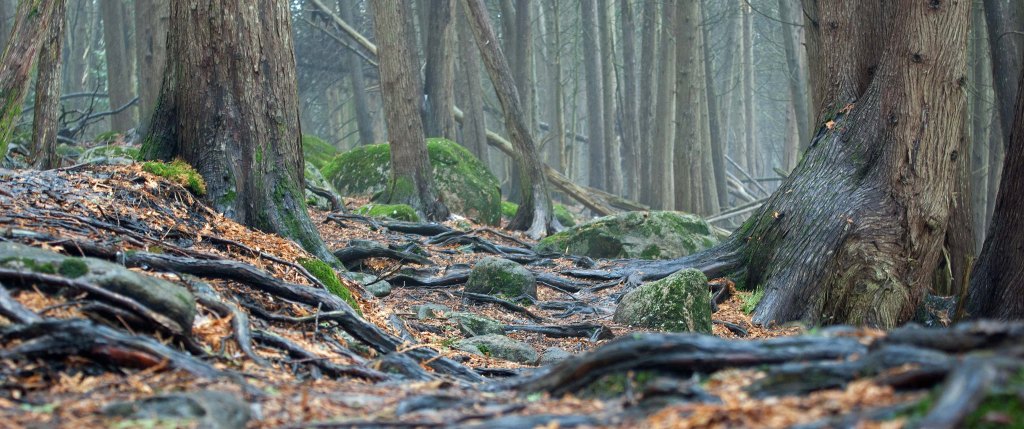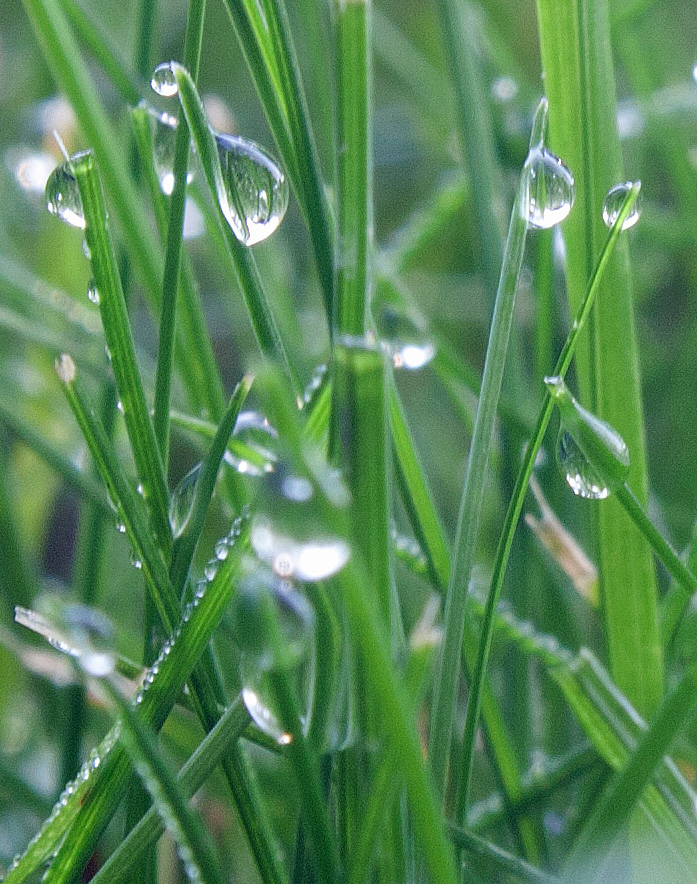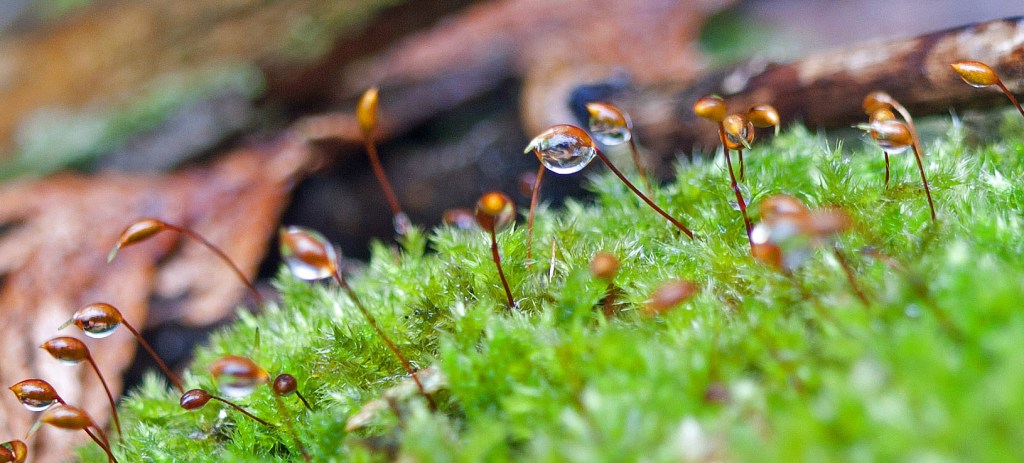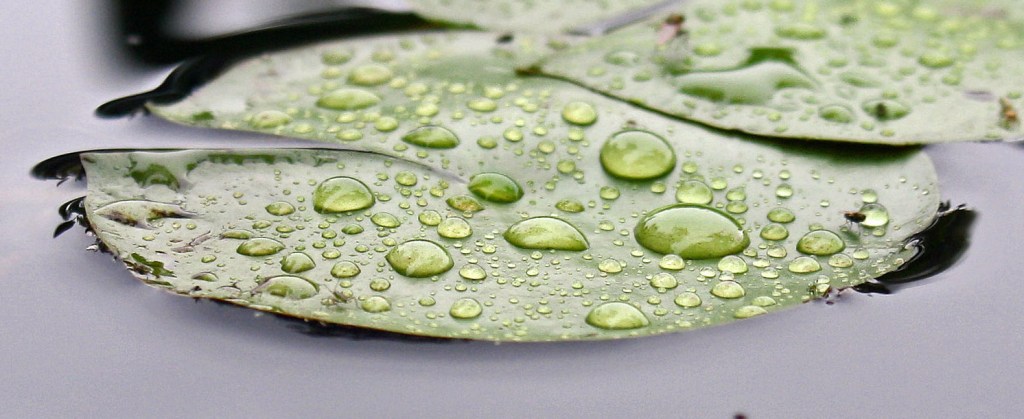
A short time ago, I had a wonderful conversation with good friend Margaret about how walking in nature—along a river, in a forest, by a marsh or lake—centres us and feeds our soul. Margaret and I agreed that walking in nature fulfills the “explorer” in us, brings us out of ourselves in discovery and allows us to enter that wonderful blissful state of being “in wonder.” Margaret then shared how surly she got when it was a rainy day and she couldn’t go for her walk. I didn’t share that those are the very days I covet for my walks.
It got me thinking about why a walk in the rain is so special for me.
Why Rain Makes Us Feel Good

As a little girl, I used to get caught in the odd thunderstorm that swept through my small town on a sudden wind. I could taste the fresh air after the storm and felt exhilarated by it. What I didn’t know then was that the air was charged with negative ions from both the lightning and the rain—as water molecules crashed into one another.
We are all familiar with the feeling of well-being we get from moving water—rivers, waterfalls, crashing or surging waves, thunderstorms, fresh snow, transpiration by plants, even showers and fountains. Part of this feeling comes from negative ions in the air. Negative ions are basically oxygen ions with an extra electron attached, produced in water molecules.

As early as the 1700s, with the work of Swiss researcher Horace Bénédicte de Saussure, scientists have shown that negative ions are generated by moving water and by plants when exposed to intense light during photosynthesis. Negative ions clean the air. They do this by attaching to positively charged particles such as pollen, mold, bacteria and dust, which then become too heavy to stay airborne. A country meadow typically contains from 2,000 to 5,000 negative ions per cubic centimetre (cc); mountains, forests and seashores provide up to 50,000 negative ions/cc. Niagara Falls generates anywhere from 30,000 to 100,000 negative ions/cc in its air.
Rain on its own is incredibly therapeutic, not just in its ability to support life and to refresh, but in its nature to make us feel wonderful. The chaotic yet stable sound of rain is gently calming. Rain mutes and lacks the jolting sounds that activate our defence and vigilance system. It’s a non-threatening sound that blocks out sudden noises that otherwise alert us. The simple repetitive sound of water falling lets us rest our brains and induces a mild meditative state. Studies have shown that the sound of rain produces alpha waves in a human brain, which is close to the brain’s state when we are asleep. The sound of rain not only relaxes but brings out our creativity. Marine biologist Wallace J. Nichols (author of Blue Mind) argues that the sound of rain allows our brain to wander, eventually reaching a state known as the default mode network. In her book The Artist’s Way, Julia Cameron mentions “s” activities, such as “shower” as creativity-inducing.
Walking in the rain can be pure joy.
Why Walking in the Forest in the Rain Is Even Better
These days, when I get up in the morning, if the day is foggy or a light rain is falling, I feel compelled to quickly down my breakfast, pack up my camera gear in a waterproof bag, shrug into my raincoat and boots and hightail it to the marsh or the forest, where I’m greeted with the fresh scent of petrichor—the pleasant smell that accompanies the first rain after a long period of warm, dry weather. The rain helps release plant oils and chemicals produced by soil-dwelling bacteria called actinomycetes into the air. The term arose from the Greek petra(stone) and ichor(the fluid that flows in the veins of the gods). The earthy scent of rain on dry soil evokes wonderful memories of playful childhood, freedom and awestruck wonder. The complex loamy organic aroma of a forest during a rain easily ranks among my favourite smells. The link of a smell to strong memories is a scientific fact. In my writing class at George Brown College, I teach my students that the sense of smell is most associated with memory. This is because smell is first processed by the olfactory bulb and has direct connections to the two brain areas most strongly connected to emotion and memory formation—the amygdala and the hippocampus.
Rain intensifies a forest’s mosaic of unique scents from pungent, heavy and sharp to floral, fresh and sweet—based on the forest ecosystem’s qualities. A cedar-hemlock forest will give off different smells than a maple-beech woodland.
The conditions are best in the morning.

The morning light favours photography with a gentleness that softens and deepens everything, and invites intimacy. This is particularly magical if a morning mist settles or rises like stream from the damp earth, slowing time. When it rains, moisture covers everything. It brings out vivid colours and textures. Infinite shades of green, brown, grey and yellow create a fluid landscape that water paints into a vibrant watercolour scene. I move through it, boots crunching and squelching along the spongy loam path, as though wrapped in a moving artwork.
The moisture carries the warbles and fluting chirps of lively bird song amid the hush of raindrops on vegetation. Each surface has a unique voice. And each rainfall—from light drizzle to hard pour—carries its own tune, rhythm and percussion. It’s all a wonderful symphony of diverse frequency from rich infrasound to beyond.

Perhaps the exhilaration I feel in the dripping forest is that this is when I can hear Nature’s conversation with herself. As human sounds grow muted during rainfall, Nature’s sounds fill in the gaps. The rain and the fog bring it all close, palpable, filtering, muting and enhancing. Like connective tissue, the rain unites me with my surroundings. I breathe in the subtle flavours, the whispers and perfumes, then breathe them out. I am no longer separate. I am Stone. Leaf. Tree.
Many of us feel a sense of peace in a forest. I have no doubt that this is the result of several factors including sounds and frequencies (e.g., infrasound), increased negative charge, scents, wood essential oils, genetic heritage and memory, and simple aesthetic appreciation and beauty. But it is more than this and water—as rain or flowing stream or river—plays a major role in this potential euphoric state.
Water doesn’t just help us live; “Water teaches us how to live,” says Japanese researcher Masaru Emoto. Water teaches us “how to forgive, how to believe. If you open your ears to the possibilities in life, you may just be able to hear the sound of the pure water that flows through your body even now. It is the sound of your life—a melody of healing.” Emoto adds that, “The human body is … a universe of its own. Our bodies consist of some 60 trillion cells, each carrying out its specialized responsibility while simultaneously harmonizing with other cells in a wonderful way to make us who we are. The organs, nerves, and cells of the body have their own unique frequency. The body is like a grand orchestra consisting of the harmonization of various sounds.”
Water is the great conductor. I love it when it plays me.
Tips For Enjoying Your Walk in the Rain
- Equip yourself for the rain. Invest in good raingear: a rainproof slicker or jacket, sturdy boots (preferably waterproof), and warm clothes. I prefer to go bareheaded to get the most of my experience; but I don’t mind getting soaked. If you do mind, invest in a good rain hat. Avoid using a rain hood as it will mute too many sounds and sensations, negating the point of the experience.
- Be prepared to get wet. That’s part of the experience: feel, see, hear, smell and taste the rain and your environment.
- Get into the mindset of an explorer. Focus outward with all your senses. Slow your mind and breathing and think with the heart of one in wonder. Think of your five senses and use them all.
- Don’t overdo the experience. If you get cold or too wet, the positive aspects lose to the negative aspects of the experience. Pace yourself and be kind to yourself.
- If you use a camera, like I do, keep it dry by using something waterproof to carry it in. When you use it, either protect it with something or have something to dry it immediately once you’ve used it in the rain. Photographing in the rain can be an incredibly rewarding experience and can produce breathtakingly wonderful images that can not be created in any other weather. But you have to look after your equipment too.
- Have fun!


Nina Munteanu is a Canadian ecologist / limnologist and novelist. She is co-editor of Europa SF and currently teaches writing courses at George Brown College and the University of Toronto. Visit www.ninamunteanu.ca for the latest on her books. Nina’s bilingual “La natura dell’acqua / The Way of Water” was published by Mincione Edizioni in Rome. Her non-fiction book “Water Is…” by Pixl Press(Vancouver) was selected by Margaret Atwood in the New York Times ‘Year in Reading’ and was chosen as the 2017 Summer Read by Water Canada. Her novel “A Diary in the Age of Water” was released by Inanna Publications (Toronto) in June 2020.






This wwas a lovely blog post
LikeLike